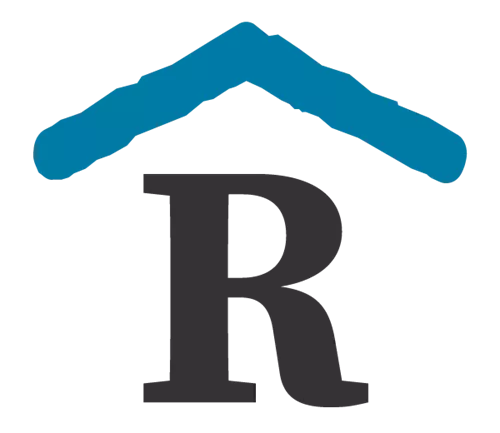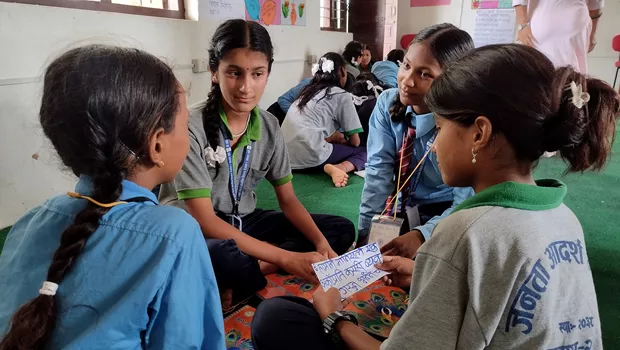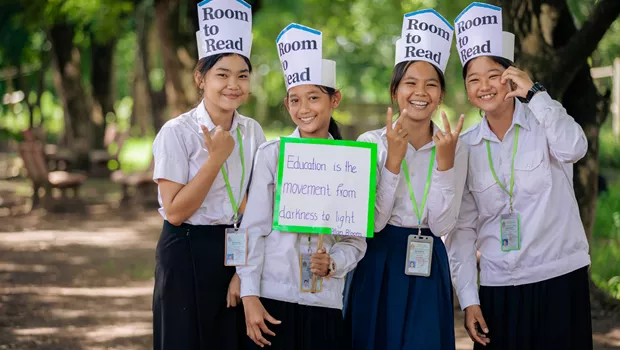
By Abie Spangler
Global Associate Director of Room to Read's Girls’ Education Program
Room to Read’s Climate Justice Clubs
With climate change affecting communities worldwide, educating young people on climate literacy and gender justice has become more crucial than ever. Recognizing this need, Room to Read developed an innovative, hands-on program called Climate Justice Clubs to equip adolescents with the knowledge and skills to address the climate crisis in their communities. Here's a closer look at how these clubs are making a difference.
What are the Climate Justice Clubs?
Room to Read’s Climate Justice Clubs are an extension of Room to Read’s Girls’ Education Program’s life skills curriculum, specially designed for students to explore topics related to climate change, climate justice and gender equality. Sessions ask students to research the various drivers of climate change, and prompt students to investigate how communities most vulnerable to climate disasters can take action to solve climate-related challenges. 
The clubs focus on three main outcomes:
- Increased climate knowledge: Understanding climate change, climate justice and how both intersect with gender.
- Decision-making confidence: Equipping students with the tools to make informed choices about climate solutions.
- Community engagement: Encouraging students to share their learnings with peers, family and their communities.
In 2023, Room to Read launched two pilot Climate Justice Clubs in countries heavily impacted by climate change — Nepal and Vietnam — to engage adolescent children in climate action.
Pilot programs in Nepal and Vietnam
Nepal: In Banke district, Nepal, Room to Read’s Climate Justice Clubs are currently running in 12 schools, benefiting approximately 620 girls in grades 7 and 8. The clubs are voluntary and take place after school, with 26 sessions spread over two years. These sessions are led by trained facilitators and cover climate justice concepts (1) and practical life skills, such as critical thinking and leadership. The participants also partake in community visits to discuss local climate action plans with community decision-makers and review policies, making learning both practical and relevant. 
Vietnam: In Vinh Long Province, Vietnam, Room to Read’s Climate Justice Clubs are mandatory and delivered during school hours in two schools. Here, the program benefits approximately 269 students, engages youth of all genders and is facilitated by biology and geography teachers. In addition to the Climate Justice Club sessions, students participate in small-group activities in which they create climate action plans, and many organize community campaigns that apply their learning in meaningful ways.
What we learned in year one
To learn from our Climate Justice Clubs, Room to Read’s Research, Monitoring and Evaluation teams led a comprehensive set of activities, gathering data on how well the program is being implemented and documenting changes observed in participants. Here are some key takeaways from Room to Read’s Year 1 Synthesis Report:
- In both countries, attendance was high, and teachers felt well-prepared to deliver the curriculum. However, teachers needed additional support in certain areas, especially when covering gender-related topics. Some activities also took longer than expected, suggesting that extra preparation time would benefit facilitators.
- The frequency of sessions met expectations, however, some facilitators felt that longer sessions would allow more time to engage deeply with the content. In some cases, teachers had to rush through or skip parts of the curriculum due to time constraints.
- Both students and teachers found Room to Read’s Climate Justice Clubs highly engaging and relevant. The interactive, hands-on approach — using group discussions, role-playing and lab activities — made learning about climate and gender justice meaningful. However, students new to this kind of project-based learning sometimes struggle, which indicates a need for more gradual adaptation to student-centered activities.
- Students, teachers and the broader community were highly supportive of the program. Parental involvement was especially strong, which contributed to the overall success of the clubs. Future improvements may include making concepts more accessible and managing club sizes to keep activities engaging.
- Room to Read’s Climate Justice Clubs stand out for their focus on human-centered climate action. They don’t just teach climate science; they help students see how climate and gender issues intersect with their own lives. Teachers and facilitators appreciated the clubs’ interactive methods and found them refreshingly different from traditional classroom learning.
- Teachers noted that students demonstrated increased environmental awareness, with many starting small projects at home — such as tree planting and reducing plastic use. Many families joined these efforts, showing that the clubs can spark meaningful behavior changes. Additionally, participants showed stronger life skills, particularly in leadership and critical thinking.
- For the clubs to be sustainable long-term, additional resources and training are needed. Teachers, especially in Vietnam, expressed a need for more support to handle the program alongside their regular workload. In Nepal, stakeholders suggested that including both girls and boys would enhance the program’s impact and sustainability.

What’s next?
Moving forward, Room to Read’s Girls’ Education Program team will carefully review all data from the first year of our Climate Justice Clubs pilot, collaborating closely with country teams in Nepal and Vietnam to ensure the program continues to evolve in response to the insights gained. By engaging with local stakeholders and incorporating feedback from teachers, facilitators, students and their communities, the team will prioritize refinements in facilitator training, curriculum delivery and resource allocation to better address the unique needs of each implementation context. This approach will allow Room to Read to strengthen the program by enhancing the depth of engagement and sustainability and ultimately support students as they become climate-literate and justice-oriented, equipped to make meaningful contributions to their communities.
Additionally, working in collaboration with government and civil society partners, Room to Read will identify opportunities to enhance the program’s sustainability by providing technical assistance to schools and districts as they take over the implementation of our Climate Justice Clubs. We look forward to driving improved outcomes and establishing a solid foundation for expanding the impact of Room to Read’s Climate Justice Clubs more widely in the future.
(1) 1 Climate justice is the principle that addresses the unequal impacts of climate change on different communities and emphasizes fair treatment, acknowledging that vulnerable and marginalized groups often suffer the most. It calls for actions that reduce these inequalities, ensuring that all people, especially those affected most by climate change, have a voice in solutions.



